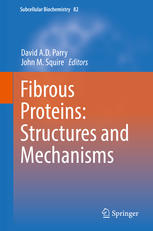

Most ebook files are in PDF format, so you can easily read them using various software such as Foxit Reader or directly on the Google Chrome browser.
Some ebook files are released by publishers in other formats such as .awz, .mobi, .epub, .fb2, etc. You may need to install specific software to read these formats on mobile/PC, such as Calibre.
Please read the tutorial at this link: https://ebookbell.com/faq
We offer FREE conversion to the popular formats you request; however, this may take some time. Therefore, right after payment, please email us, and we will try to provide the service as quickly as possible.
For some exceptional file formats or broken links (if any), please refrain from opening any disputes. Instead, email us first, and we will try to assist within a maximum of 6 hours.
EbookBell Team

4.7
96 reviewsThis book provides the readers with an up-to-date review of the design, structure and function of a representative selection of fibrous proteins in both health and disease. The importance of the α-helical coiled coil, a conformational motif based on the heptad repeat in the amino acid sequence of all α-fibrous proteins (and parts of some globular proteins) is underlined by three Chapters devoted to its design, structure, function and topology. Specific proteins covered in the text and which depend on the coiled coil for their structure and function, include the intermediate filament proteins, tropomyosin, myosin, paramyosin, fibrin and members of the spectrin superfamily. Also described are fibrous proteins based on the β-pleated sheet and collagen conformations. Recombinant structural proteins, especially of silk and collagen, are discussed in the context of developing new biomaterials with varied applications.
Established researchers and postgraduate students in the fields of protein chemistry, biochemistry and structural biophysics will find Fibrous Proteins: Structures and Mechanisms to be an invaluable collection of topical reviews that describe the basic advances made in the field of fibrous proteins over the past decade. This book, written by recognized authorities in the field, provides a clear account of the current status of fibrous protein research and, in addition, establishes the basis for deciding the most appropriate directions for future activity, including the applications of protein engineering and the commercial exploitation of new biomaterials.